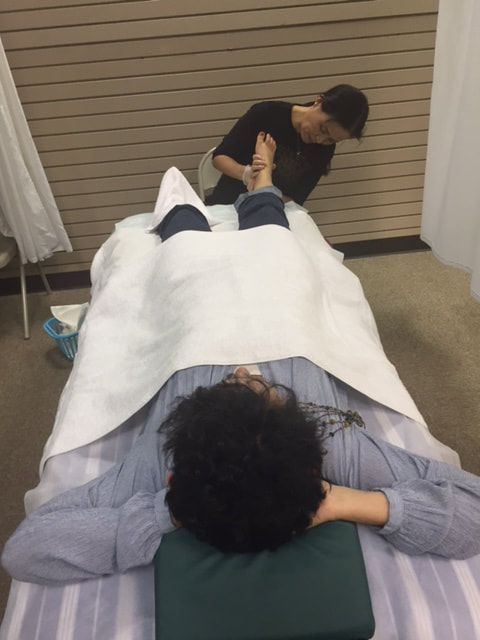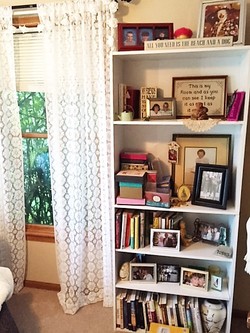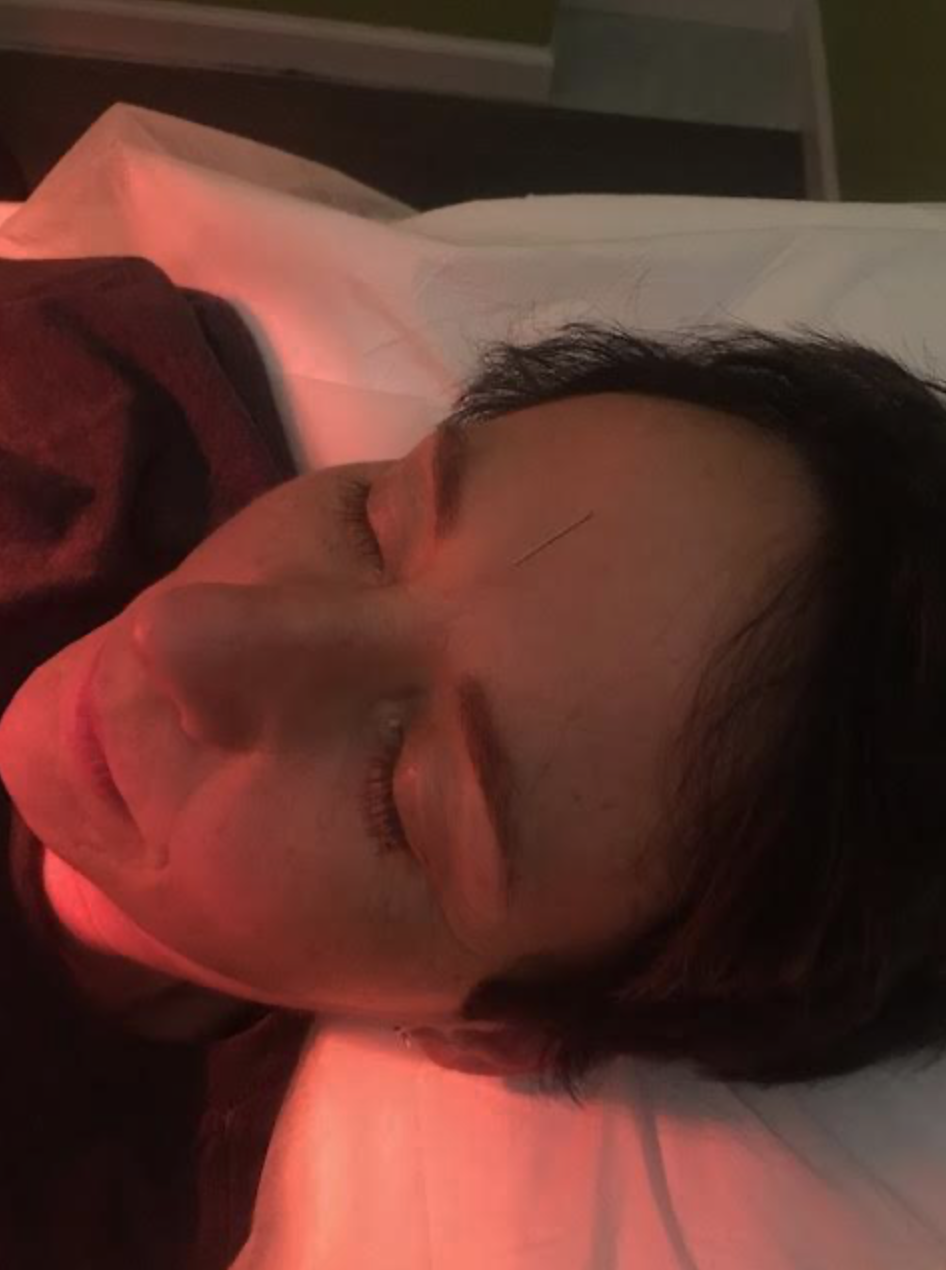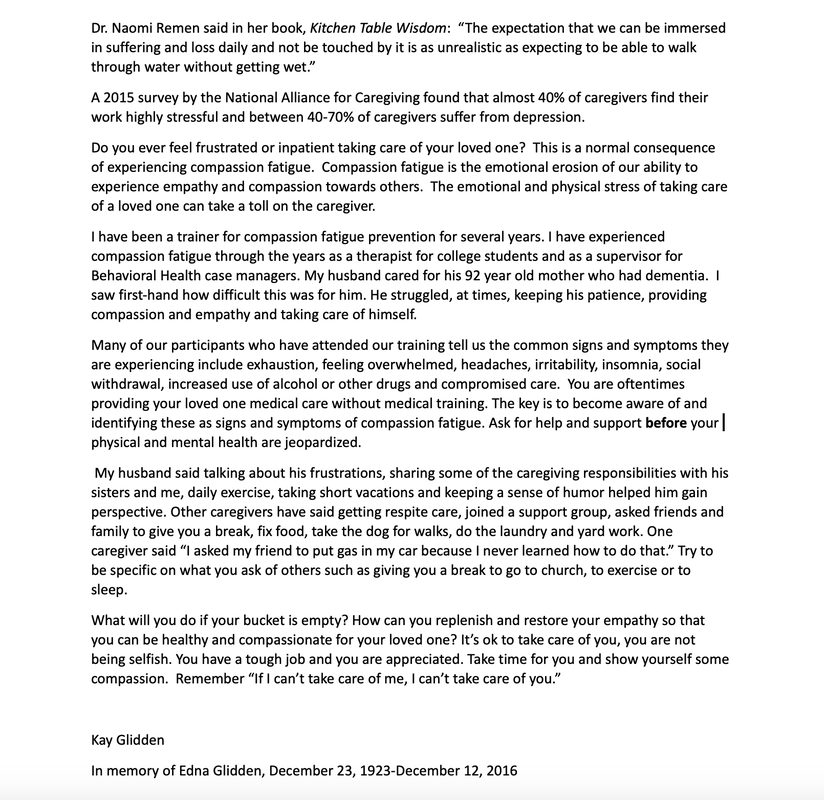|
Viewing the Classroom Through a Trauma-Informed Lens In this blog post, Kay shares about their experiences working with teachers and the importance of viewing the classroom through a trauma-informed lens. A principal who had attended one of our trainings told us that she was seeing more and more students with emotional trauma in her office. She gave the example of a teacher who had become so frustrated with a student that she told him to “get out of my classroom and go to the principal’s office.” Fortunately, this particular principal understood trauma-informed care. When the student arrived at her door, she asked what he needed to do to feel safe. He told her: “I need to build a fort.” So, she helped him build a fort in her office and sat down with him to share crackers and to talk. Once he was calm, he was able to return to the classroom, ready to learn. She understood that he wasn’t a “bad” kid who needed to be disciplined. He was a student with emotional trauma who needed help getting regulated. Trauma-Informed Teaching The National Child Traumatic Stress Network has found that 1 out of 4 children attending school have been exposed to a traumatic event. Teachers go to college to learn how to teach math, science, and reading –not mental health therapy. Thus, they are not often prepared to teach children who have emotional trauma. Teachers can also become quickly overwhelmed if they do not understand the impact of trauma on their students. Viewing the classroom through a trauma-informed lens can give clues as to why some students are triggered during fire drills or by a loud noise; why some students can’t sit still or stare out the window; or why some students are even triggered by going home during a school break. Teachers report that they are seeing more and more children with Adverse Childhood Experiences (ACE’s) in their classroom. Many students with trauma have also been misdiagnosed with ADHD. Giving teachers effective classroom management strategies to employ at the beginning of the school year can help to keep the classrooms under control. Strategies might include arranging the classroom in such a way to promote emotional regulation (considering noises and lighting) or using movement and mantras. Teaching students mindfulness skills can provide them with a toolbox for self-regulation including breathing techniques, meditation, mindful walking and eating. Self-care for Teachers
Teachers look a lot different in August (fresh and perky) than they do in April (total exhaustion). Many teachers are overwhelmed and many are, unfortunately, leaving the education field. Like many caregivers, teachers tend to help everyone else before themselves. At school, teachers hit-the-door running and are responding all day long. At home, they are parenting and grading papers. How can they find the time to practice any kind of self-care? In some classrooms, teachers may also be exposed to daily doses of traumatic stories from students and their families. One teacher told us that she had a high number of refugee students in her classroom. She was shocked to hear about the trauma they had endured. She often worried about her students, both at school and at home, and it had taken a toll on her emotional and physical health. Educators need to learn the difference between compassion fatigue, secondary trauma and burnout. This way they can understand their symptoms and then create a strategy to maintain their health and build resiliency throughout the school year. Trauma vs. Drama During a tornado drill at a middle school, one student often cried and got into a fetal position under her desk. This student absolutely refused to go into the hallway for the drill. The teacher got frustrated with what she perceived as “drama” – but after talking individually with the student, she learned that the student’s home had been severely damaged in a tornado. The tornado drill was actually triggering a past traumatic event. A difficult behavior that appeared to be drama was actually the result of trauma. As “disciplinary approaches”, students with trauma are often sent out of the classroom to a solitary room, recess is taken away, or behavior charts are used. These are not effective strategies. A better alternative may be providing a “calming corner” or “peace chair” in the classroom where students can go to get regulated or to do breathing exercises. Unfortunately, some teachers tell us that they do not have time for this “fluffy” approach of coddling students. However, we know that if teachers learn to apply these effective strategies for all students, they will have more time to teach in a classroom that will be calmer and less stressed. When teachers see students through a trauma-informed lens, the question isn’t “What’s wrong with them?” – but rather “What’s happened to them?” This perspective, combined with a positive relationship with the student, makes all the difference. Kay Glidden 3-26-19 She's the one friend who's singing Christmas carols in October. The one who actually looks forward to decorating for the holidays. She thinks that Santa in the Macy's Thanksgiving Day Parade is winking and waving only to her. She "Believes."
My friend, Marilyn, finds joy in holidays, birthday, family, friends, baseball and historical road markers. She learned the importance of patriotism by flying the flag at every holiday (of course she was born on Flag Day) and cries every time the national anthem is played. Marilyn has not always had an easy life. Marilyn was born in 1951, the first girl in an Irish Catholic family of eight kids. The family moved around a lot because her father worked for the F.W. Woolworth Company (five-and-dime store). Because of the frequent moves the children played with each other and are still close today. The children did not know they did not have a lot of money. The tradition of Marilyn's famous "flair" began when she started wearing vests to work. The day after Thanksgiving she begins to add a Christmas pin on her vest. This year's record was 37 pins (see picture for proof). The anticipation for Christmas and savoring the joy of the holiday was marked by the festive fair and helped sway office Humbug's. Next flair event... St. Patrick's Day! Marilyn has endured and recovered from painful scoliosis, cancer, diabetes and divorce. This year she is looking forward to retirement after 51 years of working. Her first job was at the Woolworth's Luncheonette and her last job will be at a public behavioral health agency. At 67, she says she feels like she is 30 and intends to enjoy long walks, traveling, spending time with family and watching the fireworks show at Mt. Rushmore. And yes, there will be a Retirement Party! How can we learn from Marilyn's example and create, anticipate and savor celebrations? Where is my/our flair? Please send me your comments.  December 2015: "Want to get a foot massage?" I was visiting a friend in New York City who has a WEEKLY foot massage routine. "What?! of course I do" (insert my images of heavenly foot rubbing with warm lotion and hot towels to sooth my barking dogs). We went to her local Chinese foot massage place in Greenwich Village where big comfy chairs are situated in a warm and inviting window store front. Please note I had no indication going into this that this foot massage experience would be anything but pure bliss (this deception was on purpose by my "friend)." "Reflexology is an alternative medicine involving application of pressure to the feet and hands with specific thumb, finger and hand techniques without the use of oil or lotion. It is based on a system of zones and reflex areas that reflect an image of the body on the feet and hands, with the premise that such work effects a physical change to the body. There is no convincing evidence that reflexology is effective for any medical condition." (from Wikipedia) We both sat down and our Asian foot massage experts went to town on our feet. Let me just say my experience was much different than my friend's. She was in heaven and I was in HELL. It was labor breathing and writhing-through-the-pain type of HELL. This was not the rainbows and kittens relaxing foot massage I was expecting. It was so bad my Foot Massage Therapist excused himself to go get a heating pad for my back because he immediately knew this Midwest middle-aged lady had big issues with her feet (and body) and told me exactly where on my feet was connected to what part of my body. He could tell me where in my foot actually led to my lower back pain and every other part of my body (reflexology). Pain, but good pain. The next day I could walk pain-free. The foot massage may not have felt good at the time but it was well worth it. I learned a lot about feet/body connection. October 2016: Beth and I visited the Chinese Massage Place in a local mall. Mary (the Chinese Massage Therapist) tried to convince us of a full body massage but we wanted the 20 minute foot massage option instead. Nothing says relaxing massage experience like a mall front shower curtain separating you from staring shoppers. Beth went first and all was going well until the right foot issue. Mary found a place on Beth's right foot that was troublesome and Beth found painful. I tried to get Mary to pinpoint the location of the foot to the location on Beth's body but she wouldn't/wasn't able to tell us. It was all fun and games until it was my turn on the table. Bad arches, bad back and fake hips, etc. I win the worst feet/body award. Will we go back? Yes, but next time we want to go and soak our feet in hot water for 20 minutes at the store prior to the food massage for maximum benefit. I have tried other ideas for self-care of the feet including pedicures, compression socks and arch support inserts. Recently while I was in Santa Fe, New Mexico I got a Japanese Foot massage (Ashi Anma) that uses a foot scrub of rice bran, green tea and adzuki bean powder followed by a warm towel cleanse (highly recommend!). Whenever we need a new pair of tennis shoes we go to a sports store that has a specialist that measures your feet, looks at your arches, how you walk/run, knees, to fit you in the right shoe for your needs. Have you tried foot massage? Thoughts? Experience? What were your connections to your feet and body? Do you believe in Reflexology? Other ideas for feet self-care? p.s. I want to try the baby foot exfoliant foot peel next. Please share your comments! I used to think that Compassion Fatigue and Vicarious Trauma only happened because of the work we do until reality slapped me hard across the face. At the time I was a single Mom to three teenage boys ages 13, 14 and 19. My sons were going through legal, school and mental health/substance abuse issues all at the same time. Daily chaos and crisis. I struggled with how to help them and how to help myself. With my physical and mental health suffering I was one hot mess and I was a “Trained Compassion Fatigue Specialist.” What a lesson life teaches you… that you really can’t help others until you help yourself. During this time I began to experience lower back problems. As I went from doctor to doctor and from test to test, I was never asked about my stress level at home or work (the mind and body really are connected!). I ended up having two hip replacements in the span of three years. I do have arthritis but I truly believe the compassion fatigue and stress excelled the process in my body at an alarming rate. I am better now at recognizing my compassion fatigue signs and symptoms and catching them earlier so they don’t progress. Am I perfect at it? NO. I try to do daily self-care. I am trying to say the word “no” because I know if I don’t say “no,” my body will say “no” for me.  As a recent empty nester I did one important project for myself and I don’t feel selfish or guilty about it! I created a safe private place in my home just for me… a Lady Lounge (see pictures). As a mother of three boys it was time to regain my feminine side with the color white, expensive sheets, rose bud lights, lace and books (no TV). I love it! How do you create an environment that relieves your compassion fatigue? I'd love to see pictures of "your spaces." Feel free to email them to me at [email protected]. |
AuthorKay Glidden Archives
May 2020
Categories |














 RSS Feed
RSS Feed